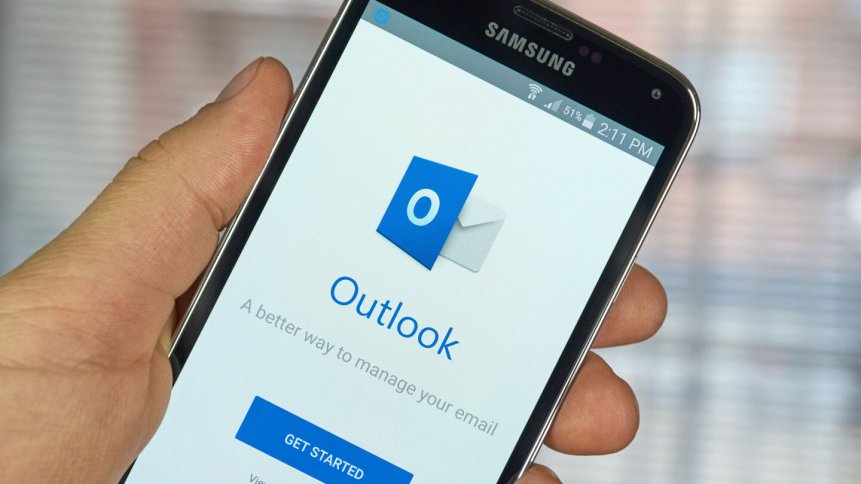
When a company as big as Microsoft announces that a version of its world-leading email platform, Outlook, is in development in a lite version for Android machines, the first question of a lot of the Western technology press ask is “Why?”
After all, Outlook has become a ubiquitous part of Western electronic culture. If you don’t already use the fuller, more feature-rich version of Outlook on your Android, you will at least know people who do. So, where’s the percentage in developing a lite version?
Where, indeed?
The Traditional Approach
Geography would ordinarily be the key to the development of things like Outlook Lite. Both Facebook and Google have released lite versions of their main products in the past. Certainly, in the case of Facebook Lite, it was launched with the initial intention not of adding especially to the options of users in Western, industrialized nations, but of allowing potential users in developing nations to use it.
YOU MIGHT LIKE

‘Mobile-first’ is more than a buzzword
That’s a factor because in some developing nations, smartphone use is growing but crucially, data networks are smaller and more fragmented, offering much lower data limits in much smaller areas. In those regions, a lite version of the app would have a clear, genuine user case.
That was backed up by the case of Facebook Lite, which launched in developing markets in 2005. Within the space of just nine months, Facebook Lite attracted 100 million users to the platform in the developing markets in which it was launched.
When Facebook Lite was later launched in the US and other, more developed markets some three years later in 2018, it picked up 1 billion downloads, presumably from people with a need to be on social media, but a genuine desire to step back from their involvement in it, without signing out and shutting down altogether. Faster access to a less developed platform quickly became a way of life for busy Westerners. That’s a completely different user case, but clearly a no less valid one – the numbers of Facebook Lite users in more developed markets don’t lie.
Everything Everywhere, All At Once
That’s why in some respects, the launch of Outlook Lite makes no commercial sense to commentators. If it were following the same sort of market-targeted launch, it would be understandable, coming in the wake of things like Facebook Lite. The business model has been proved twice over.
YOU MIGHT LIKE

Mobile app DevOps platforms making the difference
But Microsoft does not seem to be going down that path. Instead of targeted launches, it’s just “dumping” Outlook Lite in the worldwide market all at once in July, 2022.
Why?
Microsoft itself is staying interestingly tight-lipped about the reasons behind the placing of Outlook Lite on its 365 Roadmap, saying on 5th July that it had nothing to add to what was detailed on the Roadmap. And what is that? Very little. As reported, Outlook Lite will be made available worldwide in July, 2022. The end, case closed, let’s move on.
That means there’ll be no market targeting, and Microsoft will pick up users from everywhere simultaneously, rather than in the structured, market-focused way that Facebook Lite did in 2015 and 2018.
The Skype Lite Example
That has commentators scratching their heads, because Microsoft itself is no stranger to this process. In 2017, it launched a Skype Lite version for Android users in India, but on that occasion, it at least included features in the release that made Skype Lite unique and useful in costly data environments, like SMS filtering and data usage monitoring.
For Outlook Lite, there’s no indication that there will be useful bells and whistles aimed at developing markets, and the worldwide simultaneous release again underlines the idea that it’s just being launched because it can be launched, rather than with any market-targeting in mind. Is Microsoft evolving beyond the point of either explaining its launches, or tailoring them to any particular market? Could be…
The Outlook For Future Updates
One thing about the Outlook Lite release that does suggest a more traditional developing market focus (in spite of the lack of any overt statement of such intent) is that while it’s launching in a restricted form, with no school or work accounts, and only a handful of account-types supported (Outlook, MSN, Hotmail, and Live), Microsoft’s advice for troubleshooting Outlook Lite is full of reassuring phrases. If you don’t have one of the top four types of mail account, it says, “Support for other accounts will be available in future updates.” The same is said about users who want to use more than one account. It’s impossible in Lite at launch, but “Support will be available in future updates.”
All of that suggests it’s being mostly aimed at markets with fragmented and expensive data infrastructures, that might improve over time and so enable the easy and cost-effective extension of Outlook Lite’s capabilities.
That said, launching it worldwide at one time will also allow generational breakdowns of users in developed nations – from Baby Boomers who don’t want bells and whistles, just a simple email system that works, to Generation Z, who frequently use other communication tools more regularly, and only need email now and then.
The No-Brainer Factor
For the time being, with Microsoft going no further than including it in its 365 Roadmap, Outlook Lite will launch everywhere simultaneously and let the chips fall where they may. That it will be extensively used in developing markets seems like a no-brainer. Which perhaps is why Microsoft hasn’t put any expectations or market-specific restrictions on the release.









